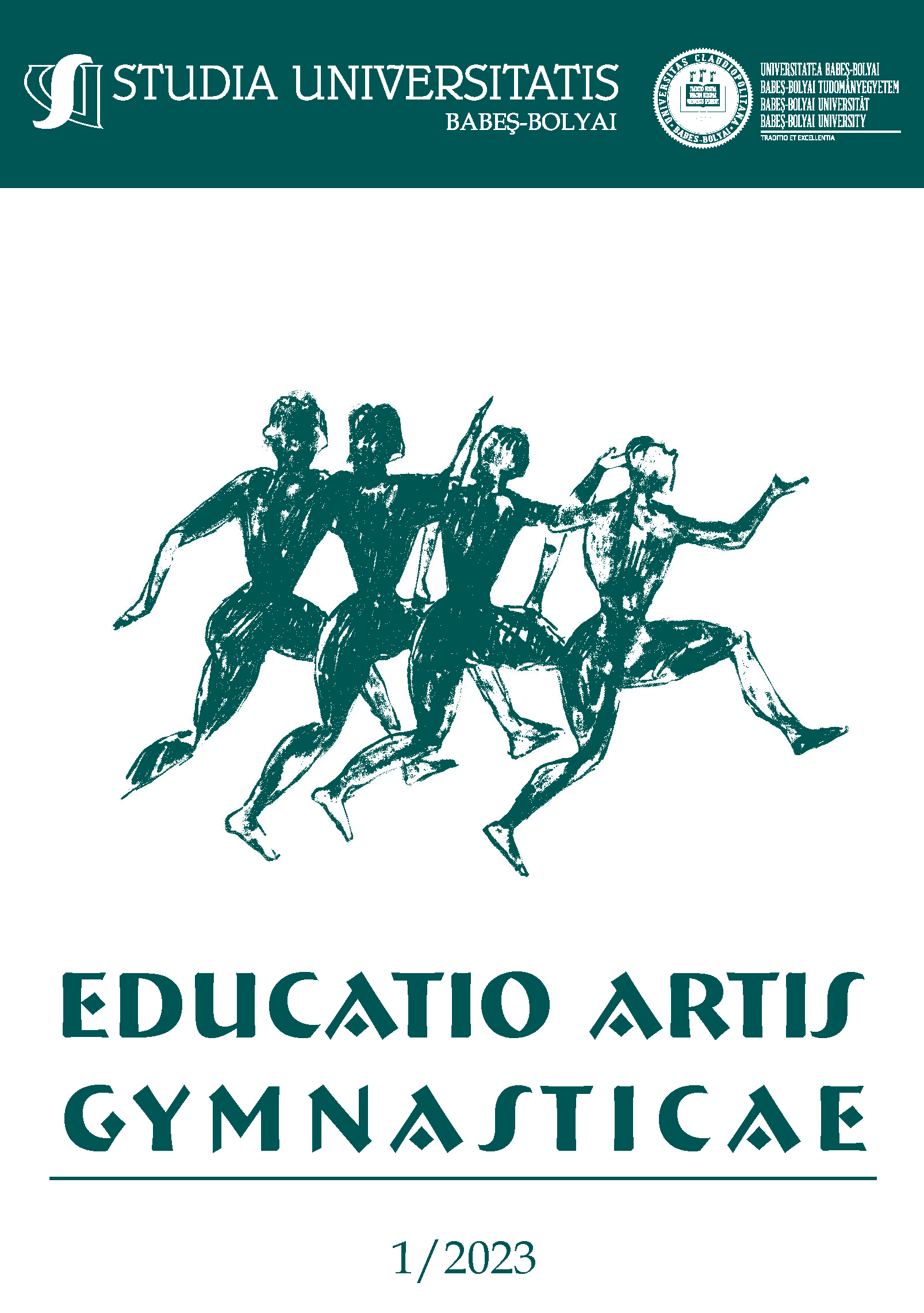COMPARATIVE STUDY ON THE LEADERSHIP STYLES OF ICE HOCKEY ACADEMY COACHES
DOI:
https://doi.org/10.24193/subbeag.68(1).04Keywords:
leadership styles, sports organizations, performance in sportAbstract
Leadership style is an essential component of the effectiveness of the coach’s work. There are three styles of coaches generally accepted in sports: dictatorial, democratic and negligent. Each of these styles has its own advantages and disadvantages, which is why it is important to understand each of them. Purpose of the study. The purpose of this research was to determine, by means of an applied questionnaire, to what extent coaches use leadership styles and their impact within a sports organization. Methods and means. To carry out this study, the questionnaire-based survey method was used - The Coaches’ Interpersonal Style Questionnaire (Pulido et al., 2018). It included 10 questions with reference to the leadership style of the coaches. The questionnaire measured 3 forms of leadership style – democratic, authoritarian and negligent. The collected data were measured using a 5-item Likert scale represented by the numbers 1 – never, and 5 – frequently/always. Results. The comparative graphic clearly shows an absolute dominance of the democratic style in each center, in the dictatorial style there is a predominantly significant difference between clubs, and the negligent style is used less often or never. Conclusions. In general, the coaches have understood the modern trends and that is why the democratic leadership style prevails, managing to involve even very young athletes in decision-making, which also implies responsibility for both parties.
REZUMAT. Studiu comparativ privind stilurile de conducere ale antrenorilor din cadrul academiei de hochei pe gheață. Stilul de conducere este o componentă esențială a eficienței muncii antrenorului. Exprimă modul în care antrenorul, în calitate de lider, este capabil să își influențeze subordonații, sportivii, respectiv modul în care este capabil să influențeze activitățile acestora. Există trei stiluri de antrenor general acceptate în sport: dictatorial, democratic și neglijent. Fiecare dintre aceste stiluri are propriile avantaje și dezavantaje, motiv pentru care este important să le înțelegem pe fiecare dintre ele. Scopul cercetării. Scopul acestei cercetări a fost de a determina, prin intermediul unui chestionar aplicat, în ce măsură utilizează antrenorii stilurile de conducere și impactul acestora în cadrul a unei echipe/organizații sportive. Metode de cercetare. Pentru realizarea acestui studiu s-a utilizat metoda anchetei pe bază de chestionar - The Coaches’ Interpersonal Style Questionnaire, acesta a cuprins 10 întrebări cu referire la stilul de conducere ale antrenorilor. Chestionarul a măsurat 3 forme ale stilului de conducere – democratic, autoritar și neglijent. Datele colectate au fost măsurate folosind scala Likert cu 5 itemi reprezentată prin numere 1 – niciodată, iar 5 – frecvent/întotdeauna. Rezultate. Pe diagrama comparativă se vede clar o dominanță absolută al stilului democratic în fiecare centre, în stilul dictatorial există o diferență preponderent semnificativă între cluburi, iar stilul neglijent este utilizat mai rar sau niciodată. Concluzii. În general, antrenorii au înțeles tendințele moderne și de aceea predomină stilul democratic de conducere, reușind să implice chiar și sportivii foarte tineri în luarea deciziilor, ceea ce presupune însă și responsabilitate pentru ambele părți.
Cuvinte cheie: stilurile de conducere, organizații sportive, performanță în sport
Received 2022 February 27; Revised 2023 April 21; Accepted 2023 April 24; Available online 2023 May 30; Available print 2023 June 30.
References
Aly, E. (2014). Communication management among athletes and coaches. European Scientific Journal, vol. 3., pp. 1857-1881.
Brinton, C., Hill, B., & Ward, P. (2017). Authorative coach: Building youth through sport. Retrieved from Proquest: http://search.proquest.com/docview/2006817230?pq-origsite=gscholar
Casey-May, H. (2019). Coaching Styles, Athletes Needs Satisfaction, and Identity: An Analysis of Athlete-Coach Relationship. Dicital Commons, Electronic Theses and Dissertations., pp. 175.
Gombos, L. (2012). Comunicare in activitatile sportive. Cluj-Napoca: CNCSIS (24).
Lyle, J., & Cushion, C. (2010). Sports Coaching. London: Elsevier.
Pope, J., & Wilson, P. (2015). Testing a sequence of relationship from interpersonal coaching styles to rugby performance, guided by the coach-athlete motivation model. International Journal of Sport and Exercise Psychology, vol. 13(3)., pp. 258-272.
Pulido, J., Sanchez-Olivia, D., Leo, F., Sanchez-Canod, J., & Garcia-Calvo, T. (2018). Development and validation of Coaches Interpersonal Style Questionnaire. Measurement in Physical Education and Exercise Science, vol. 22(1)., pp. 25-37.
Reinboth, M., Duda, J., & Ntoumanis, N. (2004). Dimensions of coaching behavior, need satisfaction, and the psychological and physical welfare of young athletes. Motivation and Emotion, vol. 28 (3)., pp. 297-313.
Sprecher, S., & Fehr, B. (2011). Dispositional attachment and relationship-specific attachment as predictors of compassionat love for a partner. Journal of Social and Personal Relationships, vol. 28., pp. 558-574.
Downloads
Published
How to Cite
Issue
Section
License
Copyright (c) 2023 Studia Universitatis Babeș-Bolyai Educatio Artis Gymnasticae

This work is licensed under a Creative Commons Attribution-NonCommercial-NoDerivatives 4.0 International License.






